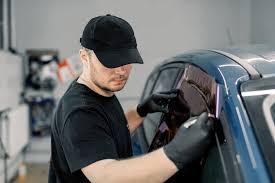Window tinting has become a popular choice for vehicle owners and homeowners alike, offering a plethora of benefits beyond just aesthetic appeal. From reducing glare and enhancing privacy to protecting against harmful UV rays, switchable film brooklyn ny serves a multitude of purposes. In this comprehensive guide, we will delve into the world of window tinting, exploring its advantages, different types, and the process of installation.
Benefits of Window Tinting:
- UV Protection: One of the primary benefits of window tinting is its ability to block harmful ultraviolet (UV) rays. These rays not only cause damage to your skin but also fade upholstery and flooring over time. Quality window tinting can block up to 99% of UV rays, providing significant protection for you and your belongings.
- Heat Reduction: Window tinting helps to keep interiors cooler by blocking a portion of the sun’s heat. This is particularly beneficial in hot climates or during the scorching summer months, as it reduces the reliance on air conditioning and improves overall comfort while driving or relaxing at home.
- Glare Reduction: Excessive glare from the sun can impair visibility and lead to eye strain, especially while driving. Tinted windows reduce glare, making it easier and safer to navigate the road, particularly during sunrise, sunset, or when driving in bright conditions.
- Enhanced Privacy: Tinted windows provide an additional layer of privacy, preventing prying eyes from peering into your vehicle or home. This added security can deter potential thieves and burglars, as it obscures the view of valuable items inside.
Types of Window Tinting:
- Dyed Window Tint: Dyed window tinting is the most affordable option available. It features a layer of dye that absorbs heat and reduces glare. While it provides excellent privacy and UV protection, it may fade over time and is less effective at heat reduction compared to other types.
- Metallic Window Tint: Metallic window tinting contains metallic particles that reflect heat away from the vehicle or home. It offers superior heat reduction and glare reduction capabilities but may interfere with electronic signals such as GPS, radio, and cell phone reception.
- Carbon Window Tint: Carbon window tinting is a high-quality option that combines carbon particles with adhesive layers. It provides excellent heat rejection, UV protection, and glare reduction without interfering with electronic signals. Additionally, it is less likely to fade over time compared to dyed tint.
- Ceramic Window Tint: Ceramic window tinting is the top-of-the-line option, featuring ceramic particles that block heat and UV rays while maintaining visibility. It offers the highest level of heat rejection, superior clarity, and longevity. Although more expensive, ceramic tinting provides unmatched performance and durability.
Installation Process:
The installation of window tinting should be entrusted to professionals to ensure a seamless and long-lasting finish. The process typically involves the following steps:
- Preparation: The windows are thoroughly cleaned to remove any dirt, debris, or residue that could interfere with adhesion.
- Cutting: The tint film is precisely measured and cut to fit the dimensions of each window.
- Application: The tint film is carefully applied to the interior surface of the windows, ensuring a smooth and bubble-free finish.
- Finishing Touches: Any excess film is trimmed, and the edges are meticulously smoothed to achieve a flawless appearance.
Conclusion:
Window tinting offers a multitude of benefits, including UV protection, heat reduction, glare reduction, and enhanced privacy. With various types available, ranging from dyed to ceramic, there is an option to suit every preference and budget. By investing in professional installation, you can enjoy the advantages of window tinting for years to come, whether on your vehicle or in your home.
